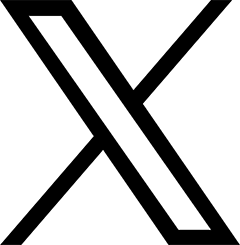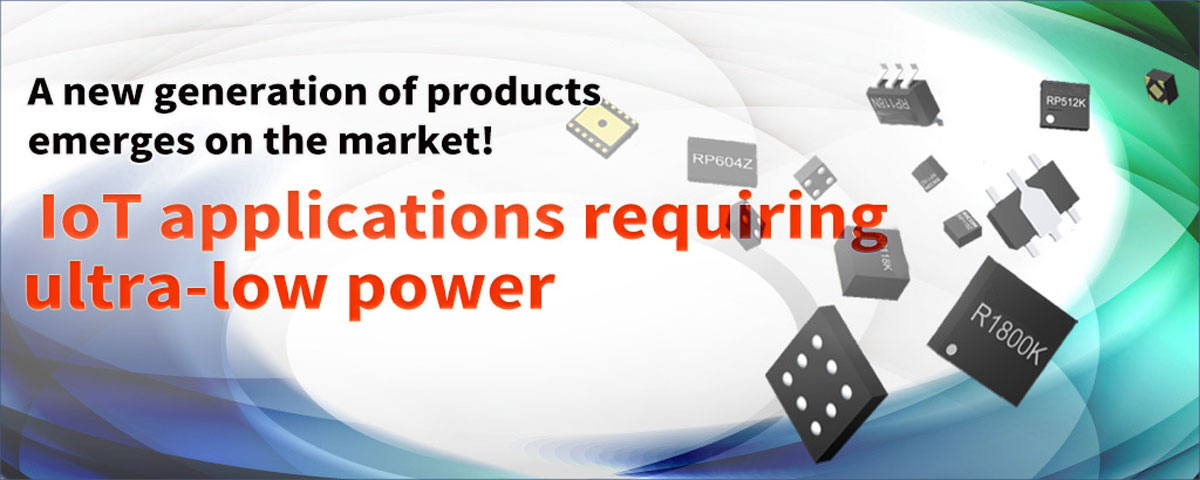Featured products
A magic new product generation for IoT applications requiring ultra-low power…
June 1, 2018
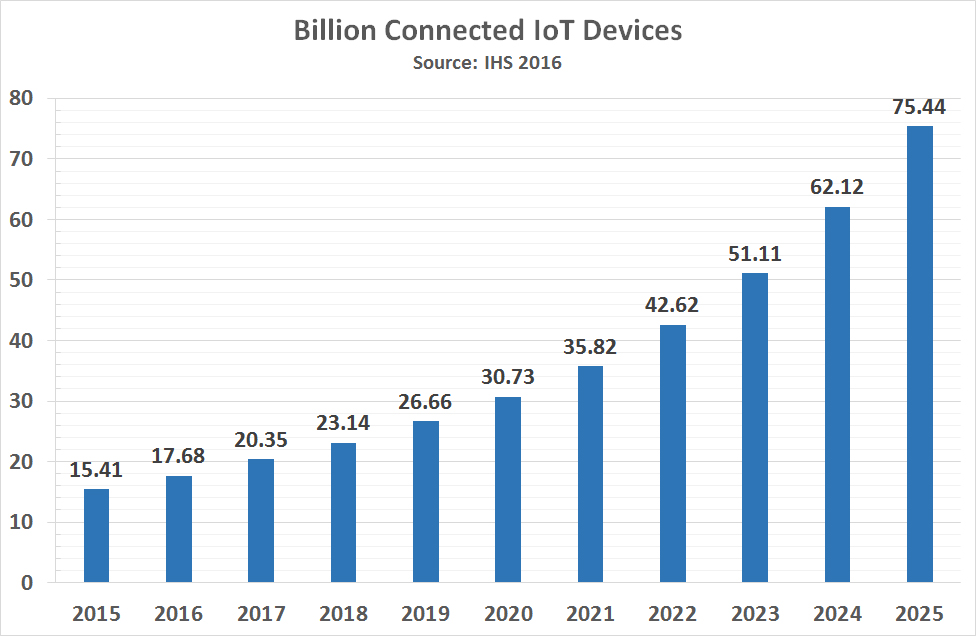
The Internet of Things is an often discussed topic in magazines, there is no doubt that this market will grow significantly in the next years. Refer to the table below, in 2025 it is estimated that this market is more than three times larger compared to 2018.
A volume of 75 billion connected devices is a very attractive opportunity for many semiconductor manufacturers. The first IoT devices launched to the market were mainly using standard semiconductors developed for smartphones and tablets. These gadgets all have batteries of 2000 or 3000mAh or even larger, the current consumption of these standard semiconductors is sufficient for these applications. But how about semiconductors for small devices like smartwatches, fitness trackers, rechargeable hearing aids, automatic medicine injection pens, wireless sensor nodes, smartmeter readers etc.? These applications require a much lower level of current consumption; their battery is significantly smaller or need to last longer than one day. The semiconductor designers were sent back to the drawing table to consider developing a next generation of products, low power became one of the key features of these products.
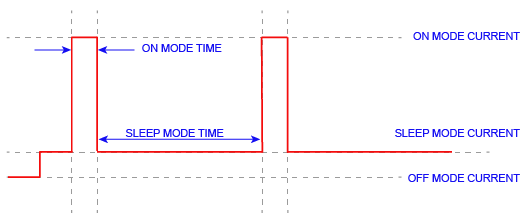
Another feature of IoT devices is that they mainly operate in a sleep mode and wake up periodically to perform a task, transmitting some data and go back to the sleep mode again. So actually the sleep mode is the dominating operating mode and it is necessary to reduce the current consumption in this mode as much as possible.
Nisshinbo Micro Devices is a semiconductor manufacturer for over 30 years and has an extensive experience in developing small sized products with low current consumption. In this article a couple of new products are introduced which are targeted for the IoT market, such as LDO regulators, DCDC Converters and even a product for Energy Harvesting. Let’s have a look to specific electrical specifications which will likely become common in the future. Quiescent current has to decrease to almost zero whilst eliminating the need for ordinary batteries is nowadays considered as well to decrease costs for battery maintenance.
RP118 3-Mode LDO Regulator
Although Buck DCDC converters are very popular nowadays, LDO regulators still have several attractive features and they are easy to implement in a circuit. Specific LDOs with a quiescent current of 1µA or lower usually have a moderate transient response speed and the output voltage shows large peaks when exposing to line or load transients.
The RP118 LDO regulator contributes greatly to extending the battery lifetime with a quiescent current of only 0.2µA at no load, it is a special breed and offers three different operating modes:
- 1. Low power mode, saving the battery as much as possible
- 2. Fast transient response mode, providing enhanced dynamic performance
- 3. Off mode, reducing current consumption to a minimum
The LDO switches automatically between low power and fast transient response mode, the operating mode is related to the output current demand of the application. For example, when the output current increases above a 1mA, the LDO will switch over from mode 1 to mode 2 and vice versa. The performance of the RP118 is enhanced in fast transient response mode. The ripple rejection in particular, but also the response speed to line and load transients, demonstrate much better results than a conventional low quiescent current LDO. This means that the RP118 contributes to optimised output voltage stability and ripple reduction. The off mode is controlled by the Chip Enable pin, in this mode the LDO is turned off and current consumption is reduced to a minimum of 0.002µA. It is a solution for IoT applications which are mainly operating in a sleep mode and only demand for enhanced performance when needed.
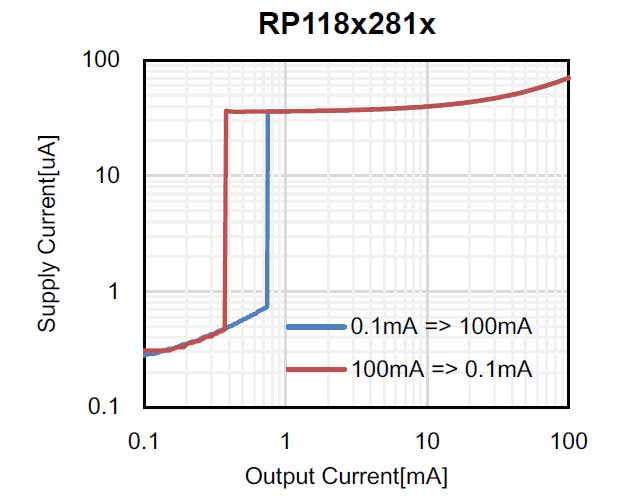
RP122 Seamless LDO Regulator
Electronics designers often struggle with the question which LDO type to select for the circuit; one option is an LDO with low current consumption but the performance like ripple rejection and transient response speed are not impressive for these products. Another option is a high performance LDO but these have a high level of internal current consumption even when the output current demand is low. In 2005 Nisshinbo Micro Devices designed a smart solution called Seamless LDO technology which means that the quiescent current adapts smoothly in relation to the output current demand and without switching thresholds. The RP122 LDO Regulator is a remarkable LDO which addresses the typical issue of high performance LDOs and offers superb specifications whilst the current consumption at no load is kept to a very low level. It features an impressive 90dB ripple rejection, fast transient response speed and only 9.5µA quiescent current without output load. Additionally, it has a very low output noise level of only 8µVrms. These features are especially of an advantage for battery powered devices with noise sensitive circuits. The RP122 contributes to decrease the total supply current of the device and increases the lifetime of the battery.
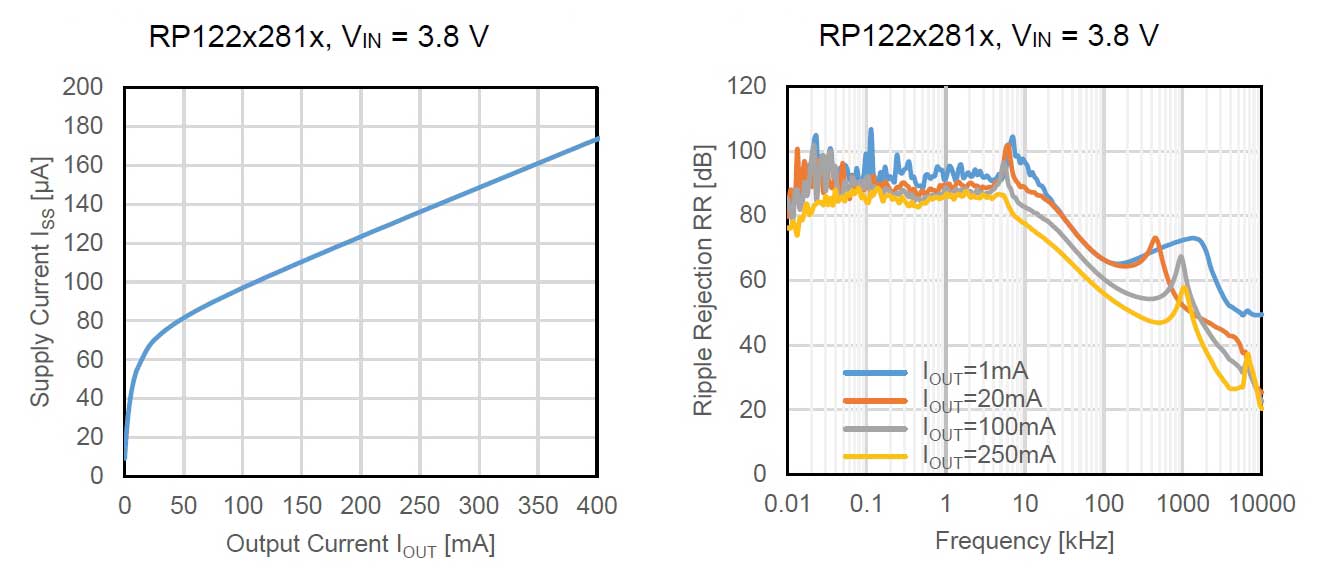
RP511 & RP512 VFM Buck DC/DC Converter
The RP511 and RP512 are a great to use when circuit board space is critical, the smallest package option in WLCSP package requires respectively 8.0mm2 or 10.6mm2 PCB area including three external components. The main difference between the two products is their output current capability, they can provide either 100 or 300mA. Both RP511 and RP512 have an impressive low quiescent current of only 300nA, prolonging battery life and offer synchronous rectification. An embedded high and low side MOSFET driver transistor eliminates the need for an external diode in the circuit.
The DC/DC Converters operate in a VFM mode which is best to achieve a high efficiency (95% at 0.1mA) at light loads. A VFM switching frequency varies depending on values of input voltage, output voltage and output current.
RP604 300 mA Buck-Boost DC/DC Converter for IoT applications
This product is in particular suitable in case a supply voltage is required which is somewhere in between the voltage level of a fully charged and fully discharged battery. At a certain moment the DC/DC Converter needs to switch over from Buck to Boost mode automatically. The RP604 is able to provide up to 300mA in Buck mode whilst in Boost mode the output current is less and related to the input voltage level. The RP604 consumes only 300nA and has a peak efficiency of 90% at 0.1mA output current. Multiple protection circuits are integrated, including an Under Voltage Lock-Out circuit which disables the DC/DC Converter in case the input voltage drops below a minimum threshold. A soft-start circuit controls the output voltage to ramp-up smoothly and prevents any output overshoot and undershoot during the start-up period. The Lx current limit circuit prevents the peak current through the inductor to exceed a specific maximum current threshold. An output overvoltage protection which turns off both the P-channel and N-channel MOSFETs and thermal protection, shutting down the IC in case the junction temperature increases above 140°C.
R1800 Buck DC/DC Converter for Energy Harvesting
The buck DC/DC Converter will be enabled to transfer energy from input to output as soon the harvesting cell generates a maximum level of power, this operation point is internally set. During this phase the transferred energy is stored in a super capacitor or rechargeable battery on the output until the energy left on the input drops below a threshold. The DC/DC Converter is disabled and new energy will be collected on the input. This process repeats and increases the energy level in the super capacitor or rechargeable battery step by step until the required output voltage is reached.
A reverse current protection circuit prevents that a current flow will occur from output to input as soon the energy harvesting cell does not provide energy, the circuit is triggered when the input voltage drops below the set output voltage. The remaining reverse current flow is Typ. 10nA. The R1800 can provide a specific output voltage which is internally set.
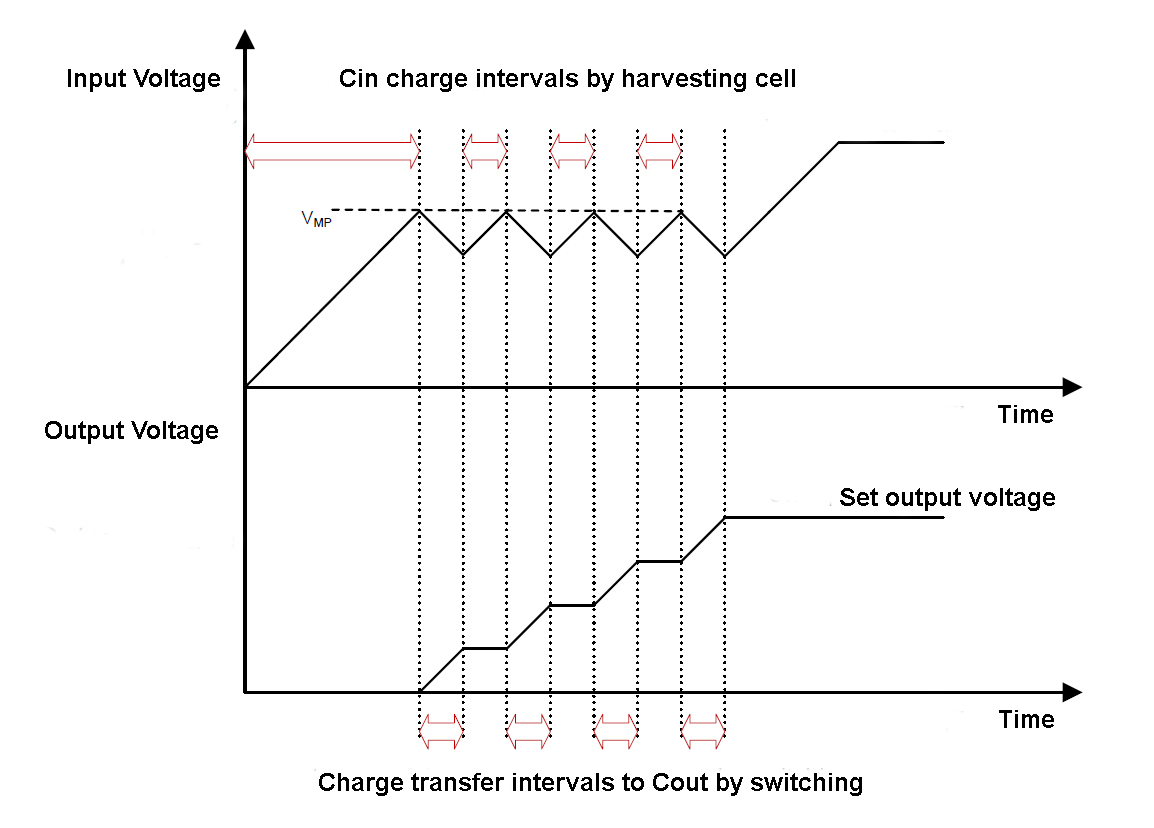
Conclusion
Hopefully this article contributes to get ideas for new applications with better specifications, a new generation of products emerges on the horizon. Products which makes it possible to extend battery life or even makes it possible to make use of an alternative power supply without traditional batteries.



